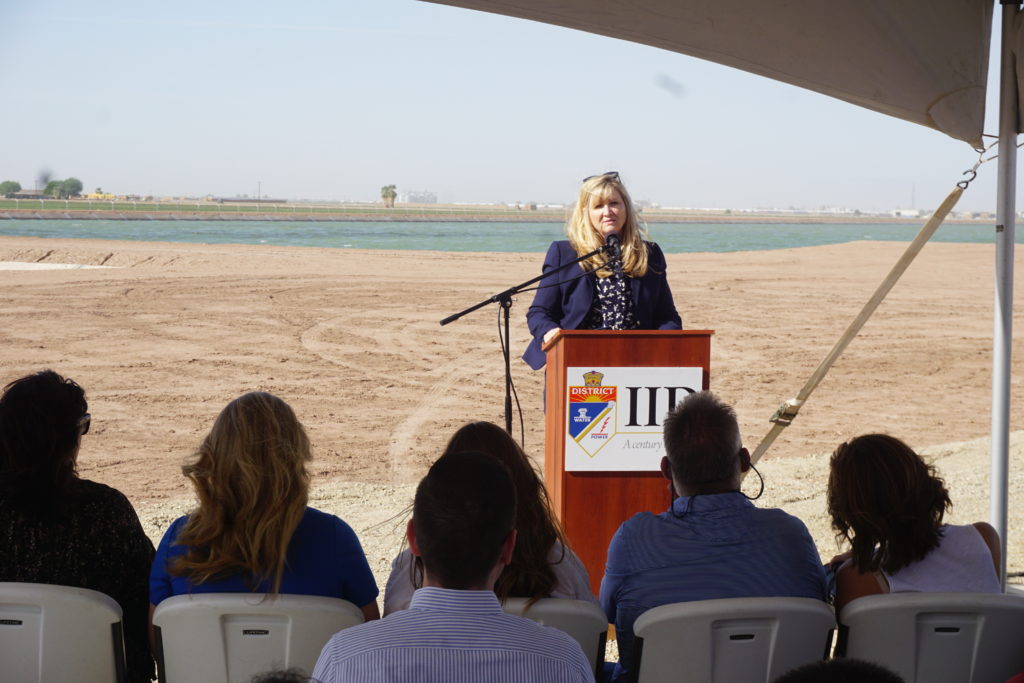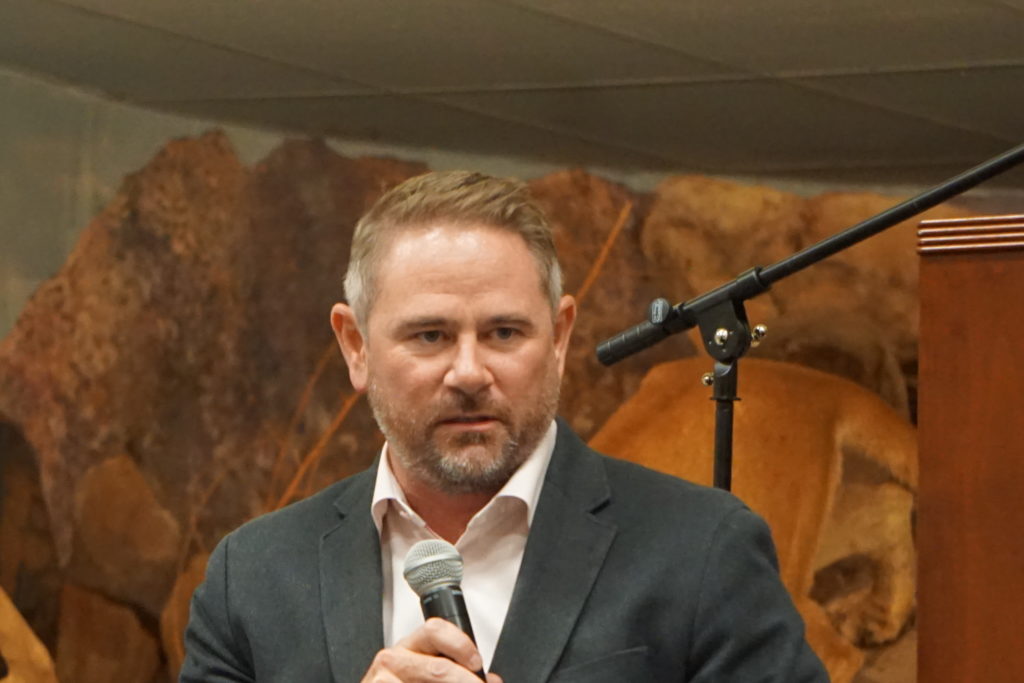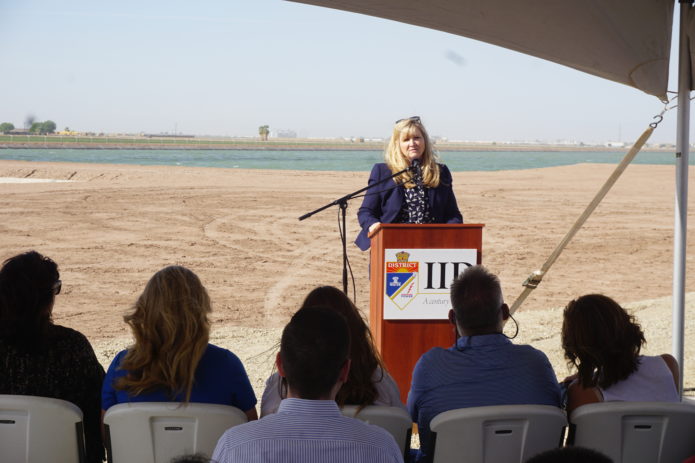
This month marks the 20th anniversary of the 2003 Quantification Settlement Agreement (QSA), a landmark set of agreements that ushered in a period of peace on the Colorado river through its multi-layered system of benefits to urban and ag water users, the state and federal governments, and ultimately the entire Colorado River Basin. Its primary goal, an objective it continues to meet today, was to enable California to live within its historic 4.4-million-acre-foot apportionment, thereby helping the Bureau of Reclamation (Reclamation) manage the river for all water users. It achieved this largely through the nation’s largest agriculture-to-urban water transfer, the conserved water transfer agreement between the Imperial Irrigation District (IID) and the San Diego County Water Authority. Under the transfer agreement, the Water Authority has provided the funding that has enabled IID and farmers in the Imperial Valley to implement conservation in a way that has protected the agricultural economy while providing a reliable and secure water source for the San Diego region. In the Imperial Valley, the transfer has enabled IID to maintain low water rates and developed an industry around conservation. The San Diego region gained a water supply linked to the Valley’s high-priority rights, both on the river and within California. For all of those who partnered in the QSA, including the Coachella Valley Water District (CVWD) and the Metropolitan Water District of Southern California, the QSA became an example of what could be accomplished for the betterment of all through collaboration.
Another critical component of the QSA was addressing the environment. The legislation that enabled the QSA to move forward required specific steps to be taken to protect the environment, most notably the Salton Sea. Through that legislation, the QSA Joint Powers Authority (QSA JPA) was formed, made up of IID, the Water Authority, CVWD, and the state to address the specific environmental impacts of the QSA. Separately, the legislation provided a pathway to address the larger issue of Salton Sea restoration, and the state was given the sole responsibility to tackle the issue of restoration. Today, the QSA JPA continues to meet its environmental responsibilities through permanent on-the-ground air quality projects at the sea along with other projects, like the building of the Managed Marsh, a nearly 1,000-acre wetlands habitat near the sea. The state is also making positive strides in moving forward with its phased approach to restoration known as its Salton Sea Management Program (SSMP). A critical component of the SSMP, the state’s 4,000 acre-foot Species Conservation Habitat, its largest project to date, will begin operation by the end of the year, with plans to double the size of the project starting in 2024.

There is much to commemorate on this important QSA milestone, as Water Authority Chairman Mel Katz highlighted in a recent press release: “This landmark water deal has stood the test of time, providing numerous benefits both in the San Diego region and more broadly across the Southwest. One of its most important accomplishments is that it brought water agencies together as collaborators. We’ve had disagreements along the way, but history has validated the value of our collective efforts to provide water security.”
That sentiment was echoed during an event held on Oct. 10 and organized by IID to commemorate the QSA. Held at Pioneers’ Museum in Imperial, the event was attended by water leaders from throughout Southern California and the Colorado River Basin, Imperial Valley farmers, along with state and federal leaders and environmental justice representatives. Reclamation Commissioner Camille Touton delivered a recorded statement to mark the event. Touton credited the QSA for making California more drought resilient than it would be without the QSA and added that the QSA has helped the overall vitality of the Basin.
IID also marked the QSA’s 20th anniversary with a dedication ceremony for its first mid-lateral reservoir, constructed as part of its system conservation program under the QSA and with funding from the transfer agreement between IID and the Water Authority. The reservoir will help IID and farmers with operational flexibility in addition to conserving 400 acre-feet annually. It was named the Lloyd Allen Water Conservation Operational Reservoir in honor of the late Lloyd Allen, who served five terms as an IID director until his passing in 2006. Director Allen helped negotiate the QSA and during the reservoir dedication and unveiling of a monument in his honor, it was said that he believed in the importance of collaboration as essential to protecting the Valley’s water rights.

For all its benefits, the QSA could not have foreseen the challenging times caused by long-term drought and climate change. The entire Basin, including Mexico, finds itself faced with having to make tough decisions going forward, both in the near-term through 2026, and in the long-term as a new set of guidelines are developed to manage the Colorado River post-2026, when the current guidelines end. Looking ahead, agencies are focused on finding collaborative solutions that also take into consideration environmental impacts, like at the Salton Sea. The Water Authority and its QSA partners have delivered a clear message that the QSA has to both be a part of those discussions and that the QSA stands as a model of conservation for others to follow. Water Authority General Manager Dan Denham recently highlighted the QSA as a model of conservation and acknowledged future challenges in a recent press release: “The QSA, through its mutually beneficial formula of providing secure water supplies through voluntary conservation while protecting agriculture and the environment, offers a template for other regions of the Southwest as we collectively seek to live within the reduced flows of the Colorado River. I’m very proud of the work we and our QSA partners have done to get to this point – and I recognize that more collaboration, resilience and vision will be needed to thrive in a hotter and drier future.”
